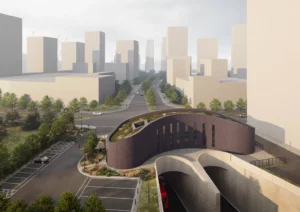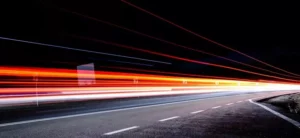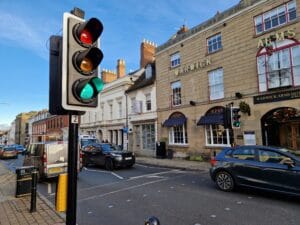Reducing vehicle usage in London should be a priority if carbon is to be reduced at a significant rate.
According to a new report published this week, commissioned by the Mayor of London, Sadiq Khan, new analysis shows that more action will be required by City Hall, particularly around reducing vehicle use in London, but that the Mayor does not have the funding or powers to deliver everything that is required alone.
Mr Khan has said the report a wake-up call for the UK government on the need to provide much greater support to help London to reach net-zero by 2030 and to help the UK to reach its national target, which was announced before COP26.
The report, by Element Energy, analyses a range of scenarios. Two scenarios, High Electrification and High Hydrogen, are closest to current UK-wide targets (i.e. a 68% reduction in emissions by 2030 relative to 1990 levels) but still exceed this UK level commitment due to a more ambitious retrofit programme.
These scenarios represent the maximum level of residual emissions considered to be still compatible with a 2030 Net Zero targets but are still equivalent to trajectories several years ‘ahead’ of those in the 1.5 ‘C Plan. Reflecting that national-level decisions on the relative roles of electrification and hydrogen in the net zero transition strategy are not expected until the mid-2020s, one scenario favours electrification of heat and transport (High Electrification) and one assumes that hydrogen is available at scale in the long-term (High Hydrogen).
The No Constraints scenario represents a significantly accelerated decarbonisation pathway that aims to deploy all possible policies and measures to reach the minimum achievable residual emissions by 2030; this includes more challenging policies to drive the transition such as early scrappage of boilers and vehicles. This scenario is not considered to be constrained by the costs or current local influence to implement such challenging policies and effect the necessary measures over the short timeframe. Due to the pace of decarbonisation required, technology options will necessarily be limited to those that are currently available or will certainly be available by the late 2020s, with a high
reliance on widespread electrification.
The Accelerated Green scenario represents an intermediate scenario, in which London decarbonises as rapidly as possible ahead of the national targets while leaving long term technology options open as far as possible; in particular, allowing some heating systems to remain connected to a blended (hydrogen and biomethane) gas grid and a moderate share of pure hydrogen in selected applications. This scenario aims to reach the lowest possible residual emissions by 2030 without requiring the most difficult and costly approaches and measures to be undertaken, such as boiler and vehicle scrappage.
The report says that the GLA, TfL, London boroughs, and other private sector and public bodies all must play a role in
driving the net zero transition and will need to take be proactive in both leading local change and in
working to put London in a strong position to take advantage of national opportunities as they arise. It
is important to note that:
• The Mayor can’t deliver net zero emissions in London on his own, and many measures
will rely on national-level decisions and coordinated action with relevant partner
stakeholders, as well as engagement and behaviour change by the public and local
businesses.
• All actors will need significant additional resource in the form of designated staff,
funding streams and financing to deploy these policies and take crucial action.
Between 2000 and 2018, London saw only a 7% reduction in emissions from transport.
In order to reduce transport emissions by anywhere close to the amount that will be required to clean up London’s air, achieve net-zero by 2030 and cut congestion, the capital will have to see a significant shift away from petrol and diesel vehicle use and towards walking and cycling, greater public transport use and cleaner vehicles. At the moment, just two per cent of vehicles on the roads in London are electric.
The Mayor has already expanded the Ultra Low Emission Zone in London.



























